Measuring Car
Exploring energy, forces and friction and non-standard measuring.

Connect
(5-10 Minutes)
After a day of measuring at school, Sam and Sara have tried to measure almost everything on their way home. When they get to their favorite play area, Sam wonders how far it is from the tree house to the ice-cream shop.
Sam says that it doesn’t look that far from where he’s standing. Sam pulls out a measuring tape and wants to start measuring, but Sara thinks there could be a much better way of measuring distance.
Can you help Sam and Sara build a car that measures how far it travels? Let’s find out!
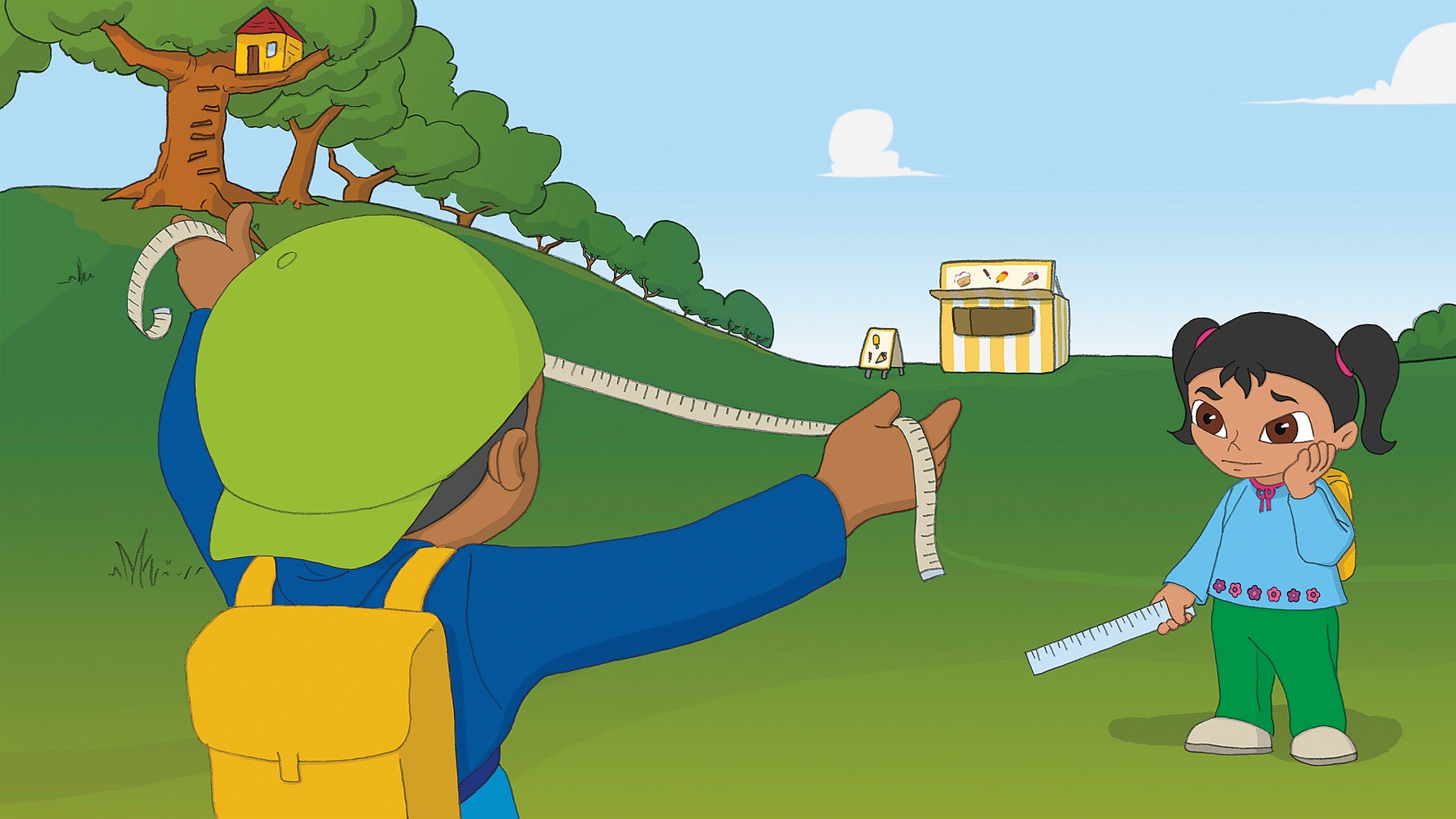
Construct
(5-10 Minutes)
Build the measuring car using building instructions no. 6.
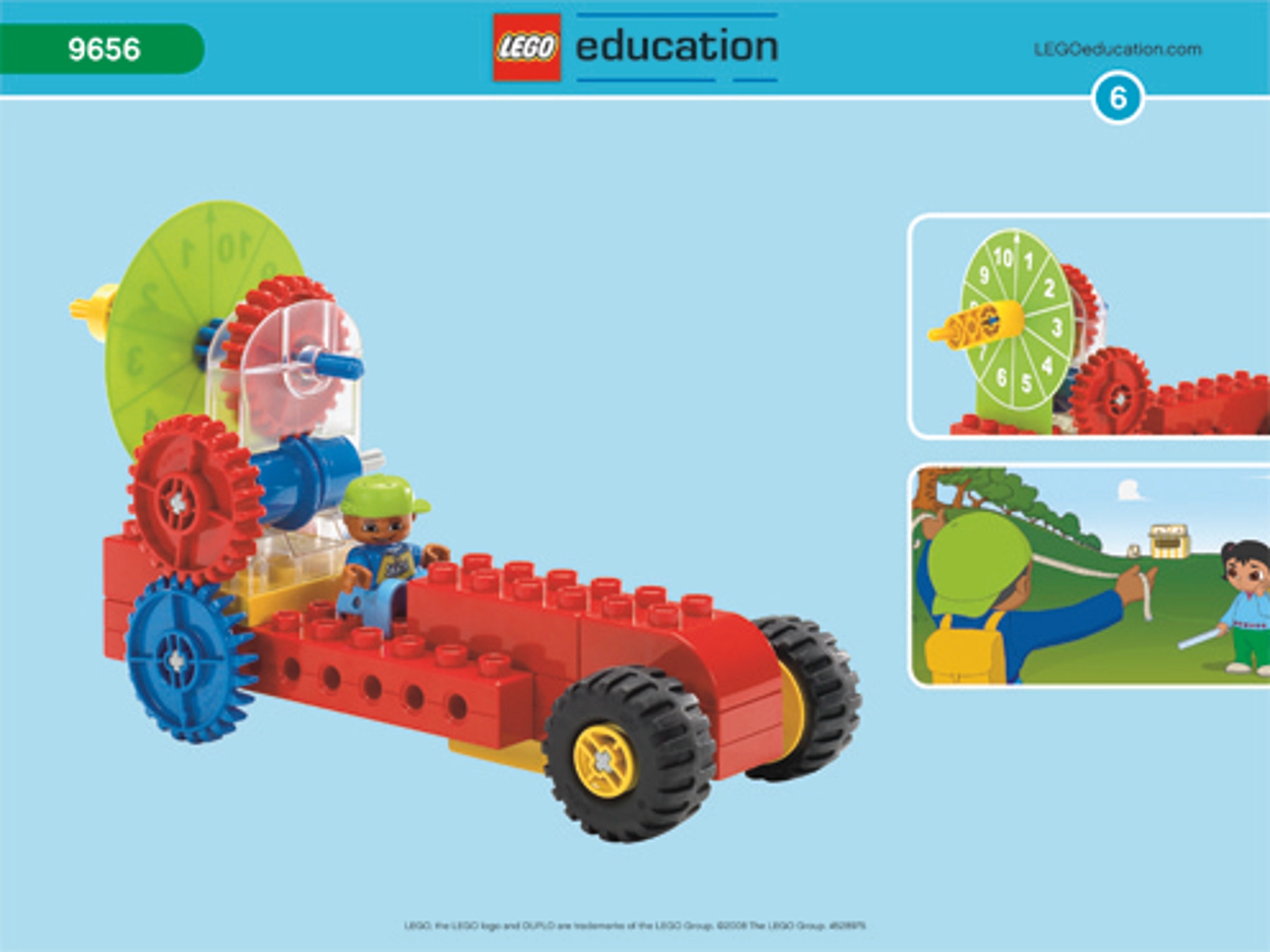
- The wheels should turn freely and not rub on the sides of the car
- When the blue gear wheels turn, the pointer should also move
- The pointer should not rub on the scale
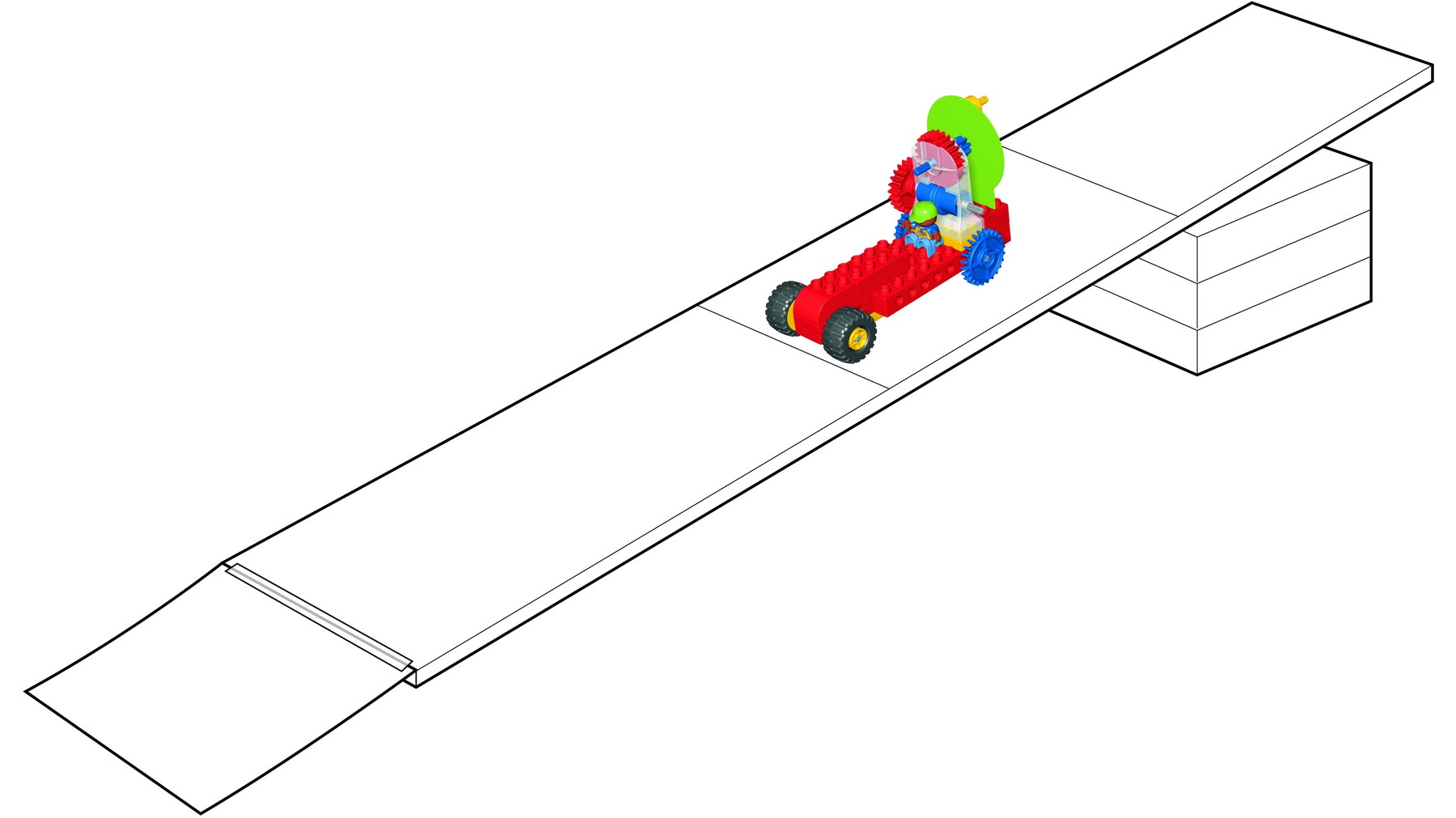
Make Your Test Ramp
- Draw a start line 1 yard and another start line 20 in from one end of the plank
- Place a support so that the top start line is 6 in from the floor
Idea:
If the thickness of the plank means that the measuring car bumps down onto the floor, use a piece of paper or card and sticky tape to make a smooth transition from plank to floor.

Using the Scale
- The scale is divided into 10 units and can be used for non-standard measurement
- Push the measuring car forward
- Notice that as the measuring car moves forward the pointer turns
- The pointer will point to the scale and give you a reading of the distance (units) the measuring car has traveled forward
Contemplate
(10-15 Minutes)
How far?
By using the scale you can measure the distance the measuring car travels. Find out how far the measuring car will travel when rolling down from the two different start lines.
First predict how far the measuring car will roll down from the two start lines.
Mark your predictions using the scale and numbers on the worksheet.
Next, test how far the measuring car actually rolls down from the two start lines by reading the scale.
Mark your findings using the scale and numbers on the worksheet.
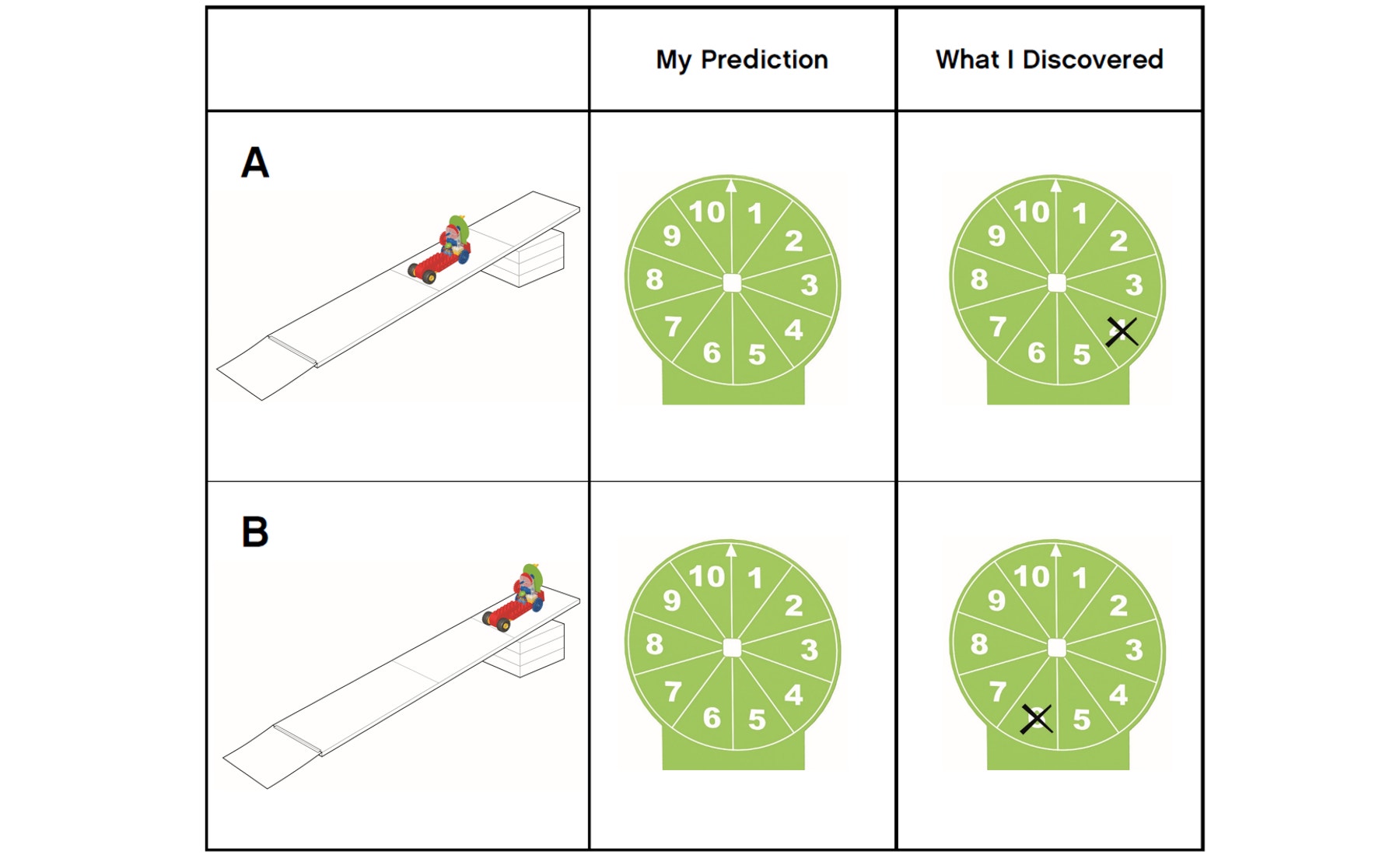
Have the students reflect on their tests by asking questions such as:
What did you predict would happen and why?
Describe what happened.
How did you make sure your tests were fair?
Did you always start at the same spot? Did you push the measuring car as it started going down the ramp? Was the pointer reset after each test?Describe how the model works.
Tip:
Remember to reset the pointer to zero after every test by turning the blue gear wheels until the pointer is at the top of the scale.
Continue
(10-15 Minutes)
Going further?
Make your test ramp 10 in high and test how this affects the distance the measuring car will travel. Find out how far the measuring car will travel when rolling down from the two different start lines.
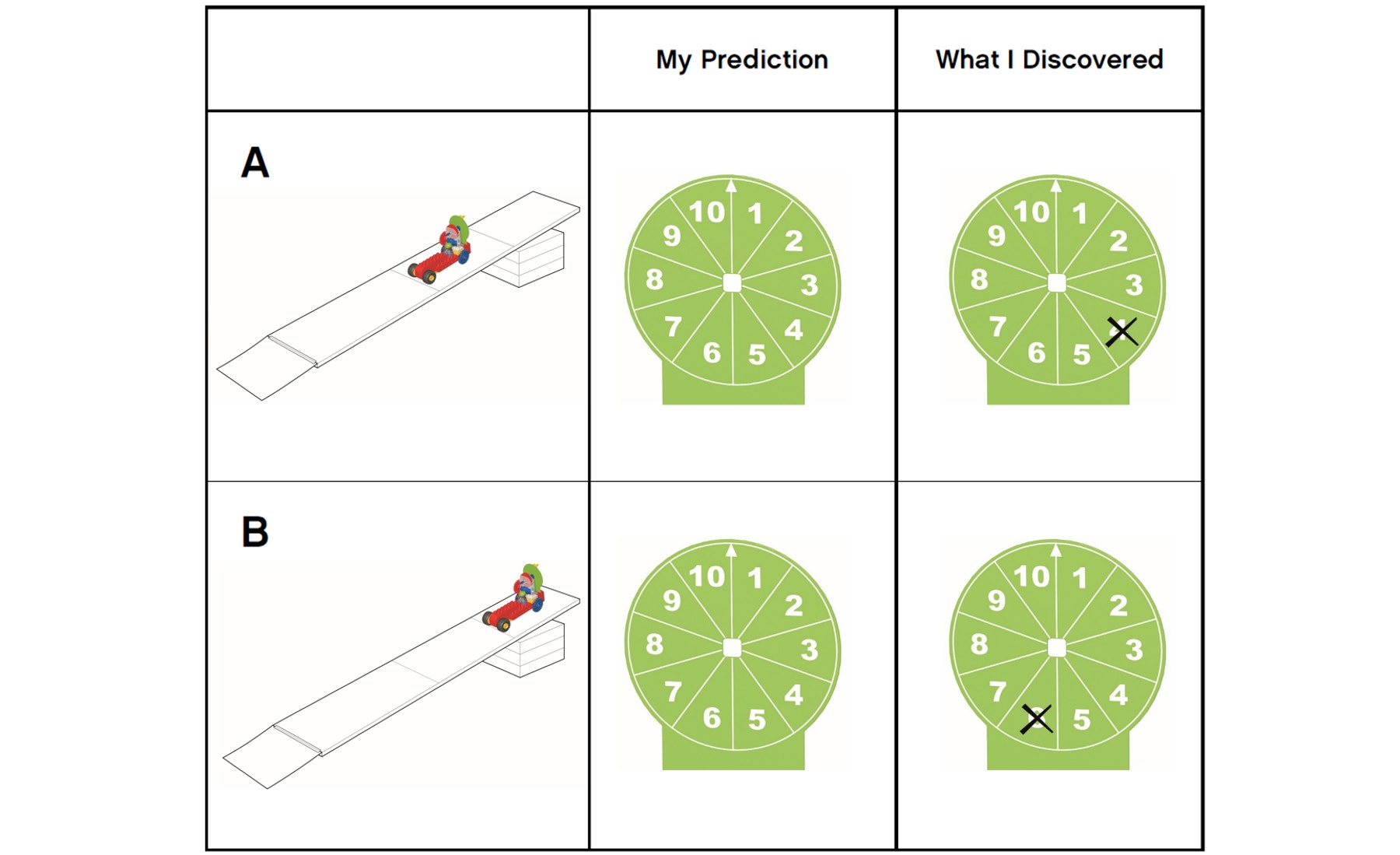
First predict how far the measuring car will roll down from the two start lines.
Mark your predictions using the scale and numbers on the worksheet.
Next, test how far the measuring car actually rolls down from the two start lines by reading the scale.
Mark your findings using the scale and numbers on the worksheet.

Teacher Support
Students will learn about:
How movement can be described in many ways
How to make use of structural frameworks
How data can be represented and interpreted
9656 Early Simple Machines Set (two students per set recommended)
Boxes or books
Paper and cardstock
Plank or wooden shelf – 60 in or more
Ruler
NGSS
Disciplinary Core Ideas: Physical Science
1 MS-PS2 Motion and Stability: Forces and Interactions
Crosscutting Concepts
Cause and effect: mechanism and explanation
Scale, proportion, and quantity
Science and Engineering Practices
Asking questions and defining problems
Developing and using models
Planning and carrying out investigations
Using mathematics, Informational and Computer Technology, and computational thinking
Obtaining, evaluating, and communicating information
Common Core State Standards for Mathematics
Mathematical Practice
MP1 Make sense of problems and persevere in solving them
MP2 Reason abstractly and quantitatively
MP4 Model with mathematics
MP5 Use appropriate tools strategically
MP6 Attend to precision
MP7 Look for and make use of structure
Measurement & Data
K.MD.A / 1.MD.A / 1.MD.C / 2.MD.A / 2.MD.D
Writing Standards
W.K.2 / W.1.2 / W.2.2
Speaking and Listening
SL.K.1 / SL.K.3 / SL.K.5 / SL.K.6 / SL.1.1 / SL.1.3 / SL.1.5 / SL.2.1 / SL.2.3 / SL.2.4
Student Material
Share with:
 Google Classroom
Google Classroom



